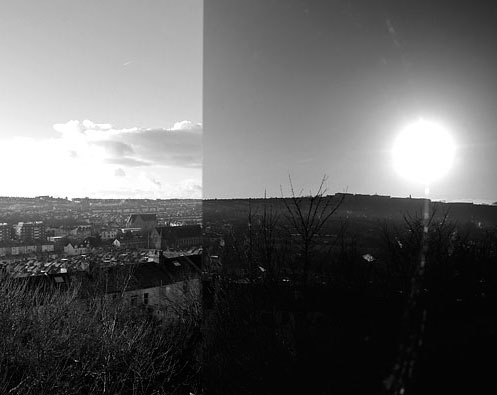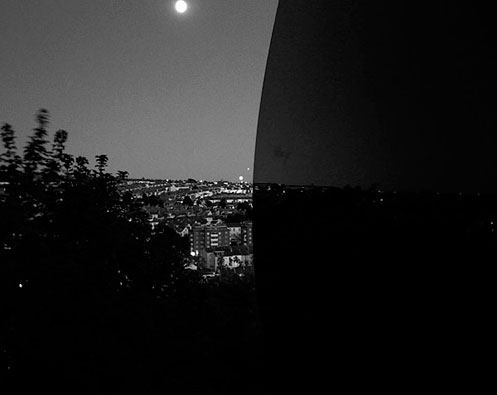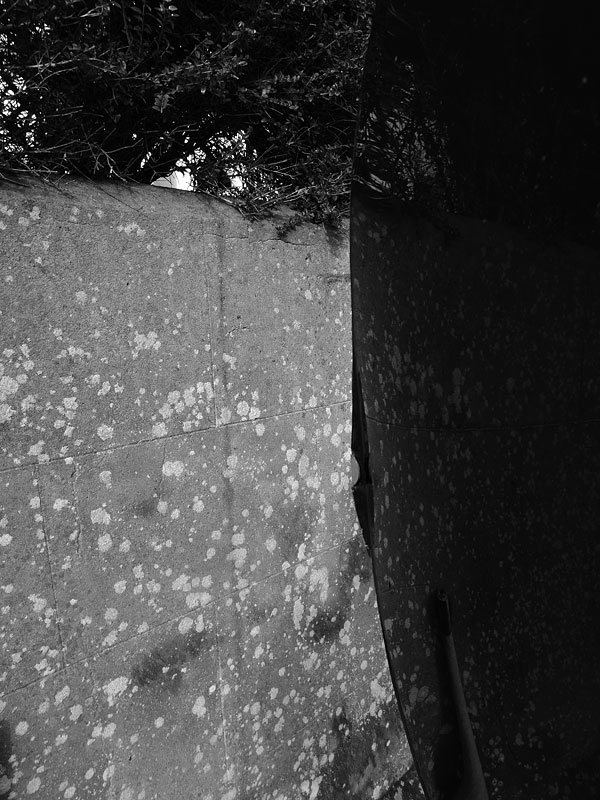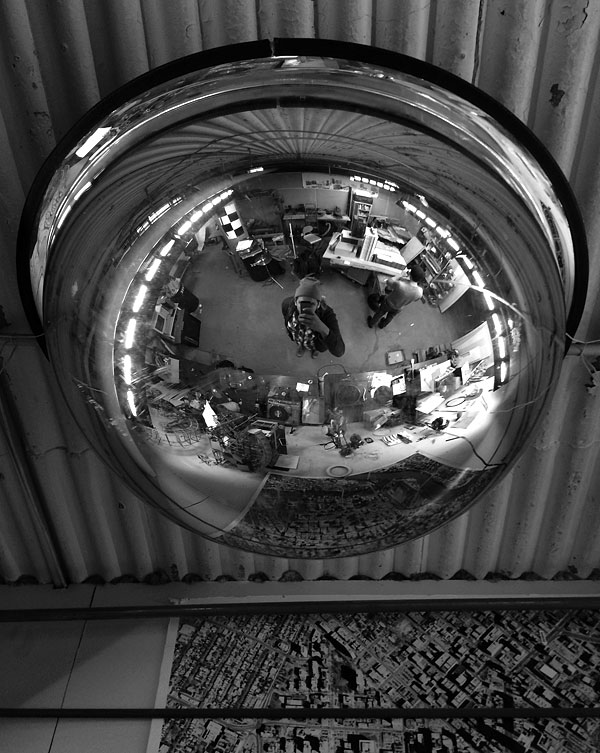Sam Lynch, Autumn 2017
Underground, in the silver of the corridor's mirror, ten years have passed. The time, both a memory and an aberration, has embedded within it the thin shadow of an approaching body (...from around the corner, that perpetually close and present space, a stretch of anticipation – that kind of place that, at times, can even follow you up the stairs…). And, perhaps beyond reason, on this day (and in this moment of my memory), I am moved by the concentrated time held distant in that mirror's surface – a slippery time that transforms the once familiar network of subsurface passages. Is it the slow curve (such a ubiquitous form) of the mirror's skin that allows me to see within it a different kind of time? Or the continuous unfolding of its nearly perfect geometry? Could it be the counteraction of rhythmic footfall by the quickening gait of that interloping reflection? Or the clash of neighbouring worlds separated only by the impossibly thin curve between? These questions did not come at the time, only the following sentence: "That mirror – it has another time in it." From the cut of the figure's body through the pipe-encrusted walls – reawakening and reforming from so long ago a silent moment of an event – came the conjuring of two different times at the very same time. I write this now as a reflection – to crease backwards the fold in the page.I remember the corridor in the mirror and I make my own. Different, changing, I make mirrors, again and again.
Most of the new mirrors are black. Some are red. I wear them, I lose them, I take them on holiday, I admire them, I ruin them. I find them now in other places, offering different times at the very same time – multiple times at once. Admittedly, I am sometimes so engrossed in a film that I find myself reading a wall-mounted clock in the background of a shot, or the flash of an actor's watch, as if they can tell me the time. But these differing times brought about by my mirrors are not like the kind that come from playing a film in a room (the time of the murder vs. the time I hit pause), nor are they like the two times that begin and end a photograph. They are two times that are simultaneously, experientially real: a doubling of the present. They do not have a sequential relationship.How can these two times be understood as multiple (double) if they are indeed both the present - are they not then the very same? The common notion of the present as a single condition gets a little shaken perhaps, but there is no need for only one present(1): my mirrors multiply.
To address how slippery even the singular can be, in his essay A New Refutation of Time Jorge Luis Borges writes:
This collapsing of temporal continuity reconfigures past and future like the ceaseless pattern of rain on the lake. Borges' experience of time denies succession and my mirror does too: two moments can be present – two presents can be experienced. And neither present of the mirror device comes before or after the other. The conjuring is not of two times that are identical (as in Borges refutation), although each are unfolding at the same time, but of two presents that are different from one another. They speak to the weather and the light of the horizon in their own way. The flash of a bird out of the thinnest of air comes and goes with no direction. Sunlight upon the road gives way to an impossible tangle of darkness that yields into night. Twilight and dawn are interchangeable, as are North and South. Sometimes, even, there are three suns in the sky! It is from the shared presence of these multiple times that the crucial part of the conjuring arises.
The conjuring. The crux. The conjuring involves the intended activity of observation. I sink into the metaphorical posture of the embrace – the mirror and I out on the town, alone in my room – in conversation, in silence. The crux – to remain in this relationship. To sustain surprise, to feel unsettled, to anticipate the disturbances.
The creative value of this engagement is the dynamic resetting of the comfortable – the essential pleasure of the unknown drawn out through the irresolvable nature of the experience. This resetting becomes an embedded field, both material and temporal. To sustain the irresolution in a constellation of research (this heterogeneous field), that is as nonlinear as its content, activates the space between familiar and abstract – a space which falls between sentimental nostalgia and the eyeless black (or a red so red it's wet) of the fetish itself. The poetic craves a slice of the empirical - a waxing edge to gnaw. Distortions of external and mirror worlds fuse and overgrow, and I begin a procedure to tend the seam between. The beauty of this dissection! Even the calculations elude. Measuring grid-like, mapping the territories – one finds only more of an escaping terrain. Between the black of the surface and the mirror of sky is another space. It is neither upon nor beneath, neither reflection nor substance. It is the space in which the bird is afray and engulfed – the space that contacts the very liquid of my eye.
I see these mirrors now in the horizon of sea beyond my window.
Bibliography Groom, Amelia, Maria Abramovic, Giorgio Agamben, Emily Apter, Karen Archey, Augustine, Mieke Bal, et al. Time. Edited by Amelia Groom. London: Whitechapel Gallery and MIT Press, 2013. Bergson, Henri. Duration and Simultaneity: Bergson and the Einsteinian Universe. Translated by Leon Jacobson. Manchester: Clinamen Press Limited, 1999.
1 - In philosopher Henri Bergson's text Duration and Simultaneity he describes the primary essence of simultaneity as the experiential ability of consciousness to follow more than one flow of time at once (pp. 34-37). 2 - Jorge Louis Borges "A New Refutation in Time" in Time, ed. Amelia Groom (London: Whitechapel Gallery and MIT Press, 2013), 151. |
First published in Entreentre pamphlet 3 on the occasion of the exhibition Natural Artifice- Architecture, Photography and the Construction of Reality, Oxford Glass Tank Gallery, 2018.




